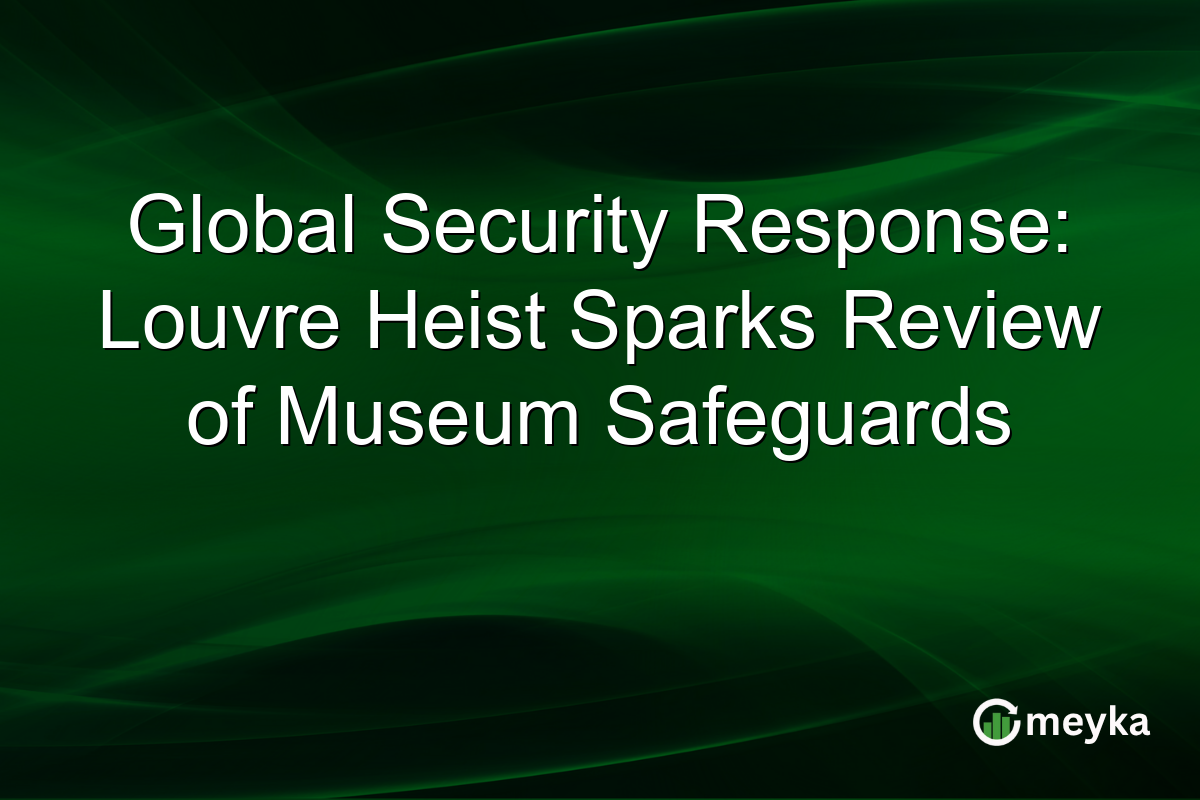Global Security Response: Louvre Heist Sparks Review of Museum Safeguards
The recent heist at the Louvre, an audacious theft involving France’s crown jewels, has ignited a sweeping reassessment of museum security on a global scale. This high-profile incident, where thieves managed to abscond with priceless artifacts, underscores critical vulnerabilities in museum safeguards. With the jewels still missing, institutions worldwide face growing pressure to bolster their protective measures, a shift that might transform funding allocations and technological adoption across the art sector.
The Louvre Heist: A Catalyst for Change
The bold theft at the Louvre has grabbed headlines, catalyzing an urgent call to revamp museum security. While art heists are not new, the scale and precision of this robbery demand attention. Reports suggest that significant gaps in Louvre’s defenses were exploited, as per NBC News. This event has pressed institutions globally to examine and enhance their own security frameworks. Protecting invaluable pieces now requires not only vigilance but also advanced technological solutions to thwart future attempts.
Rethinking Museum Security Measures
The immediate impact of the Louvre heist on museum security protocols is evident. Institutions are reassessing their existing systems, focusing on integrating cutting-edge technologies such as AI-driven surveillance and improved access control systems. This shift comes with increased investment demands, potentially altering museum funding priorities. As noted by industry analysts, the adoption of innovative security measures can protect against art theft, but it demands significant financial commitment and a strategic approach.
Art Theft: Consequences Beyond Financial Loss
The ramifications of art theft extend well beyond monetary loss, affecting cultural heritage and public trust. The Louvre heist serves as a stark reminder of the value of historical artifacts and the need to preserve them. Additionally, the incident highlights the importance of international cooperation in recovering stolen goods. As Paris prosecutors continue their investigation, the lack of recovery, reported by CBS News, underscores challenges in tracking and retrieving stolen art in a global context.
Looking Ahead: Funding and Technology in Focus
Future-focused institutions now face the dual challenge of securing additional funds and deploying advanced security solutions. As museum executives push for these changes, the emphasis will likely be on forging public-private partnerships to offset costs. The integration of technology like blockchain for provenance verification is another possible avenue. This could enhance transparency and security, deterring future art crimes. The ripple effect of the Louvre heist might instigate extensive security reforms, influencing the museum sector significantly.
Final Thoughts
The Louvre heist has cast a spotlight on museum security, highlighting both vulnerabilities and opportunities for technological integration. This event serves as a catalyst, urging museums worldwide to reconsider their security priorities and funding strategies. While the immediate focus is on solving the theft, the long-term implications could include a profound transformation in how cultural institutions safeguard treasures. For investors and stakeholders, this shift underscores the need for sustained investment in advanced security measures, potentially reshaping the future landscape of museum operations. By prioritizing security, museums not only protect assets but also preserve cultural heritage for future generations.
FAQs
The heist has prompted a reevaluation of security protocols worldwide, emphasizing the need for advanced technology and increased funding to prevent similar incidents.
Beyond financial loss, art theft undermines cultural heritage and public trust, while also posing significant challenges in terms of international recovery efforts.
Advanced technologies like AI and blockchain offer enhanced surveillance, access control, and provenance verification, essential for thwarting sophisticated heists.
Disclaimer:
This is for information only, not financial advice. Always do your research.






